I have a simple non-inverting op amp buffer, to buffer the input to my circuit. It works fine, but I wanted to add a bypass capacitor to the power rails to make sure that it is as low-noise as possible. I referred to this answer and decided to use one rail-to-rail capacitor because it was one less part. But, when I add the capacitor, it gets way more noisy.

simulate this circuit – Schematic created using CircuitLab
When I zoom in on the noise, it actually looks like an oscillation at 35 kHz (see image below). The yellow trace is the output of my whole circuit. The blue trace is where I have re-created just the part shown in the diagram, with a single op-amp and capacitor on a breadboard with a constant voltage input. Both circuits are using the same power supply. When I take out the bypass capacitors, both lines return to being almost totally flat. What is going on here?
